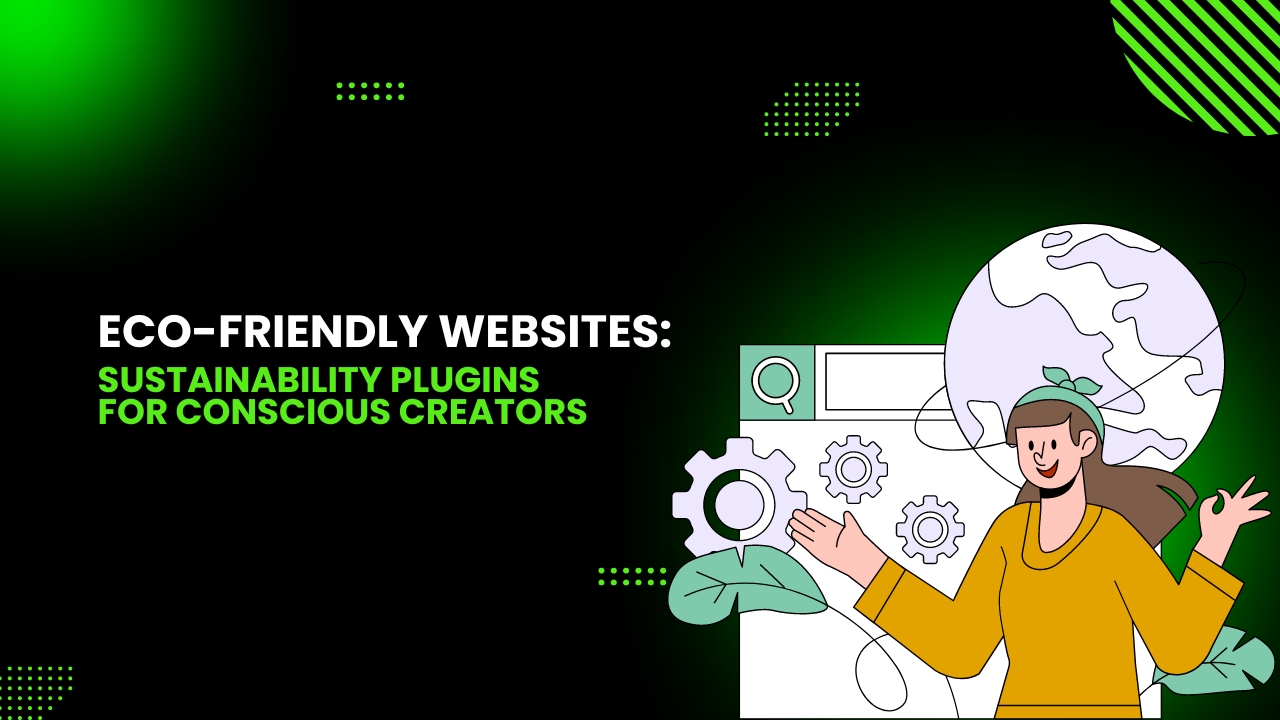Introduction
What is an Eco-Friendly Website?
Have you ever wondered if your website could be greener? An eco-friendly website minimizes its environmental impact through sustainable practices in design, hosting, and maintenance. It’s about reducing energy consumption, optimizing resources, and making conscious choices that benefit the planet.
Importance of Sustainability in Web Design
In today’s digital age, sustainability isn’t just a buzzword; it’s a necessity. Sustainable web design reduces carbon emissions and conserves resources, contributing to a healthier planet. Plus, with more consumers prioritizing eco-conscious brands, having a green website can also enhance your reputation and attract a dedicated audience.
Benefits of Eco-Friendly Websites

Environmental Impact
Going green online helps reduce the carbon footprint. Websites consume energy, mainly through servers and data centers, which can be substantial. By adopting eco-friendly practices, you can significantly cut down on these emissions.
Cost Savings
Eco-friendly websites often lead to cost savings. Efficient coding and optimized images reduce the load on servers, which can lower hosting costs. Additionally, green hosting providers typically offer competitive pricing, making it a win-win situation.
Key Features of an Eco-Friendly Website
Energy Efficiency
An energy-efficient website uses minimal resources without compromising on functionality. This involves optimizing code, compressing images, and leveraging efficient data storage techniques.
Sustainable Hosting
Choosing a hosting provider that uses renewable energy is crucial. Sustainable hosting ensures that your website’s energy consumption is offset by renewable sources, reducing its overall carbon footprint.
How to Measure Your Website’s Carbon Footprint
Carbon Footprint Calculators
There are several tools available to measure your website’s carbon footprint. These calculators provide insights into how much CO2 your site generates and suggest ways to reduce it.
Metrics to Track
Key metrics to monitor include energy consumption, data transfer rates, and server efficiency. Tracking these metrics helps identify areas for improvement and measure the impact of your eco-friendly initiatives..
Also Read: Blogger vs WordPress: The Ultimate Showdown – Which Should You Choose in 2024?
Top Sustainability Plugins for WordPress
Plugin #1: WP Sustainable
WP Sustainable helps monitor and optimize your website’s energy usage. It provides real-time data on your site’s carbon footprint and offers suggestions for improvement.
Plugin #2: Green Hosting Performance
This plugin ensures your website runs efficiently on green hosting platforms. It optimizes server requests and improves overall performance, aligning with sustainable practices.
Case Studies of Eco-Friendly Websites
Example #1: Patagonia
Patagonia’s website is a benchmark for eco-friendly web design. They use renewable energy for hosting and have optimized their site to reduce energy consumption. Their commitment to sustainability is evident in every aspect of their online presence.
Example #2: Ecosia
Ecosia, the search engine that plants trees, is another excellent example. Their servers run on 100% renewable energy, and they have a transparent policy on their environmental impact, making them a true eco-friendly digital entity.
Steps to Make Your Website Eco-Friendly
Choose a Green Hosting Provider
The first step is selecting a hosting provider that prioritizes renewable energy. Providers like GreenGeeks and A2 Hosting offer excellent services powered by green energy.
Optimize Images and Media
Large images and media files can slow down your site and increase energy consumption. Compress images and use modern formats to ensure they load quickly and use fewer resources.
Sustainable Web Design Practices
Minimize Resource Usage
Efficient code and lightweight design reduce server strain and energy use. Focus on clean, simple designs that don’t require heavy resources to load.
Implement Lazy Loading
Lazy loading defers the loading of non-critical resources until they are needed, reducing initial load times and saving energy.
Using Renewable Energy for Hosting
Providers Using Renewable Energy
Many hosting providers now offer renewable energy options. Look for providers that use wind, solar, or hydro power to run their servers.
Benefits of Renewable Hosting
Using renewable energy for hosting not only reduces your carbon footprint but also supports the growth of green energy initiatives, contributing to a more sustainable future.
Also Read: How to Master Link Building Outreach: The Ultimate Beginner’s Guide in 2024
Optimizing Website Performance for Sustainability

Page Speed and Load Times
Fast loading times are crucial for both user experience and sustainability. Optimize your site’s speed by using caching, compressing files, and minimizing HTTP requests.
Reducing Server Requests
Each server request consumes energy. Combine files, use sprites for images, and reduce the number of external scripts to minimize these requests.
Role of Content Delivery Networks (CDNs) in Sustainability
How CDNs Work
CDNs distribute your content across multiple servers worldwide, reducing the distance data travels and speeding up load times. This efficiency can significantly cut down on energy use.
Green CDNs
Some CDNs, like Cloudflare and Fastly, are now focusing on using renewable energy. Using these services can help make your site faster and greener.
Must Read: How to Instantly Speed Up Your WordPress Site in 2024 – No Code Needed!
Impact of Website Design on User Experience and Sustainability
Simplified Design
A clean, simple design not only enhances user experience but also reduces energy consumption. Avoid unnecessary elements that can slow down your site and waste resources.
Dark Mode and Energy Efficiency
Dark mode can save energy, especially on OLED screens. Implementing dark mode as an option on your website can contribute to overall energy savings.
Tools to Monitor and Improve Website Sustainability
Google Lighthouse
Google Lighthouse provides comprehensive audits for performance, accessibility, and sustainability. Use it to identify areas for improvement and track your progress over time.
Ecograder
Ecograder evaluates your site’s environmental impact and offers actionable insights to enhance sustainability. It’s a great tool for continuous improvement.
The Future of Eco-Friendly Web Design
Trends to Watch
Sustainable web design is evolving. Watch for trends like increased use of AI for efficiency, more widespread adoption of green hosting, and innovations in energy-efficient coding practices.
Innovations in Sustainable Technology
Technological advancements are making it easier to create eco-friendly websites. From more efficient servers to advanced optimization tools, the future looks promising for sustainable web design.
Conclusion
Incorporating eco-friendly practices into your website is not just good for the planet but also beneficial for your business. From choosing green hosting providers to optimizing your site’s performance, every small step counts. Let’s make a commitment to sustainability and create a greener internet together.
FAQs
What is an eco-friendly website?
An eco-friendly website is designed and maintained with practices that minimize its environmental impact, such as using renewable energy and optimizing resources.
How can I make my website more sustainable?
Start by choosing a green hosting provider, optimizing images, and implementing energy-efficient coding practices. Using tools like Google Lighthouse can also help identify areas for improvement.
Why should I care about the carbon footprint of my website?
Reducing your website’s carbon footprint helps combat climate change and aligns your brand with eco-conscious consumers, enhancing your reputation and potentially attracting more visitors.
What are some examples of eco-friendly websites?
Examples include Patagonia, which uses renewable energy for hosting, and Ecosia, which plants trees with its ad revenue and runs its servers on 100% renewable energy.
What are some good sustainability plugins for WordPress?
WP Sustainable and Green Hosting Performance are excellent plugins that help monitor and optimize your website’s energy usage and performance.

